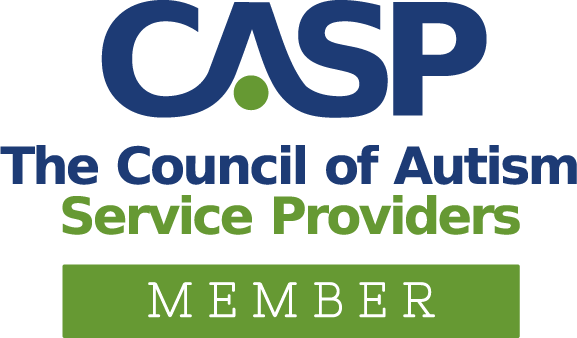Diagnosing Autism Spectrum Disorder (ASD) is challenging because it is based on behavior. It is not a disease, physical disability, or mood disorder, which means there is no traditional medical test or remedy. Autism is classified as a neurological and developmental disorder. Identifying early signs of autism can make a difference. Autism is most effectively managed when diagnosed and treated with behavioral therapy before age three. This is known as early intervention. Because early intervention is critical, it’s important for parents to recognize the early signs of autism. Learning the difference between behaviors that are quirky personality traits and those that may be autism symptoms is a challenge, but it can have a big impact on children on the autism spectrum.
The Individual Nature of Autism
Autism is the common term for Autism Spectrum Disorder (ASD). Challenges in communication, speech, socialization, and other behaviors characterize it. Autism is referred to as a spectrum because the condition’s impact has a broad range. As autism expert Dr. Stephen Shore said, “If you’ve met one person with autism, you’ve met one person with autism.” Learning common characteristics of the autism spectrum can help parents identify what early signs of autism they should be aware of in their children.
Symptoms of Autism Spectrum Disorder
Symptoms of autism can sometimes be so slight that it is hard to diagnose clearly. However, some of the most common symptoms of autism spectrum disorder include:
- Abnormal facial expressions or posture
- Monotone speech
- Lack of emotional reaction
- Delays in verbal communication
- Inappropriate social interactions
- Fixations on specific objects or repetitive physical movements
- Lack of ability to use verbal language to communicate
- High level of sensitivity to loud noises and bright lights
- Lower IQ
- Repetitive behaviors being enacted compulsively
- Sleeplessness
- Aggression
There are three levels of support for ASD, according to the medical definition, and they correspond with the severity of the symptoms:
- Level 1: Requiring Support
- Level 2: Requiring Substantial Support
- Level 3: Requiring Very Substantial Support
Early Signs of Autism: Birth to Six Months
Early-onset autism is difficult to diagnose because infant communication varies throughout normal development. For instance, some babies may begin babbling at three weeks of age, while others may not make noise routinely until eight or nine weeks. Some babies may exhibit physical capabilities early, while others may not develop fine motor skills until closer to one year old. One of the best tools parents have is journaling. Make notes about what behaviors your baby exhibits regarding physical movements, facial expressions, and response to stimuli. This will be useful information when you share your concerns at your baby’s next visit with the pediatrician. You still may not be able to get an official diagnosis, but the journal will provide important starting documentation. Being an informed parent is key. Early signs of autism between birth and six months of age are characterized by a child who:
- Does not respond to parental interactions
- Does not make eye contact with anyone, including parents
- Does not look at objects when caretakers point to them
- Does not smile or indicate shifts in expression
This is not a complete list; if your child exhibits these symptoms, it does not necessarily mean they will receive an autism diagnosis. However, these early signs of autism may indicate problems in your baby’s developmental process. Armed with this knowledge, you can discuss your concerns with a pediatrician and request a referral to a behavioral specialist to make a more concrete determination.
Early Signs Of Autism: Two to Three Years
Signs of autism in young children become clearer around the two-to-three-year mark. In fact, this is the most common age range for an official diagnosis. At this age, toddlers develop and refine motor skills further and begin to develop more defined personality traits. The rapid developmental benchmarks that children achieve between years one and three make it easier to render an autism diagnosis if one is warranted. The symptoms shown at this age range are still considered early signs of autism. One popular screening tool is the M-CHAT (Modified Checklist for Autism in Toddlers). It is not a diagnostic tool but is used to determine if you should seek a developmental autism evaluation. Early signs of autism among this age group may include:
- Language regression (going from saying words like “mama” or identifying objects to no verbal language at all)
- Making noises to get attention or express themselves
- Lack of response to their name or other obvious stimuli
- Lack of socialization (beyond simple shyness)
- Inability to empathize or recognize when others are hurt
Again, this is by no means an exhaustive list of symptoms, nor does the presence of one or more of them indicate an autism diagnosis. The presence of some of these early signs of autism may simply compel parents to dig a little deeper to determine if these behaviors support a spectrum diagnosis.
Signs of Autism in Adults and Teens
According to the American Psychiatric Association, an official autism diagnosis means symptoms were present before age three. Late-onset autism is sometimes used for those who do not show early signs of autism until their late teens or early adult years. However, in such cases, it’s more likely to be a late recognition of autism or symptoms of another condition rather than a true late development of ASD. Signs of late-recognition autism spectrum disorder might include:
- Difficulty making eye contact with others
- Difficulty holding a conversation
- Learning delays/disabilities
- Adverse sensory issues (especially when it comes to bright light/loud noises)
A specialist with experience working with people with autism spectrum disorder can determine if symptoms represent late-recognition autism. Even delayed therapy can markedly improve the quality of life for those with this condition. Late recognition requires a different therapy approach, but it does not mean that those struggling with symptoms cannot be helped.
DOWNLOAD our free infographic to understand how critical early intervention can be for children with autism.
How Therapy Can Help
Often, a new autism diagnosis leaves parents anxious, confused, and concerned about their child’s future. We encourage parents to trust their instincts when recognizing early signs of autism. If you suspect that your child is not developing along traditional benchmarks, there is no harm in seeking guidance from a qualified medical professional who specializes in autism spectrum disorder. One of the best ways to help children on the autism spectrum is to get them the help they need early. This can make a difference in your child’s success. ABA (Applied Behavior Analysis) therapy is a scientifically proven treatment for autism that involves observing someone’s behavior and teaching them new skills to deal with the world. Our licensed, board-certified therapists have experience with autism across the spectrum and all age ranges. However, ABA Centers of America can help with therapies geared toward individuals in every age bracket. Children receive targeted assistance that speaks to where they are developmentally. Teens get assistance with their symptoms that align with their experiences, and young adults on the spectrum receive treatment that prepares them for as much independence as they can achieve, given their condition. After all, autism spectrum disorder is characterized by the distinct way individuals are affected. We strongly believe that treatment should be approached in the same way. We specialize in helping newly diagnosed clients and those who have tried other interventions that have not been successful. Our approach stands out because we work with families where they are: physically, mentally, and emotionally. We build on existing skills that are working and introduce new or alternative options to fill the gap. Our goal is to help people on the autism spectrum and their families create healthy processes that improve the quality of life for everyone involved. In addition, we aim to increase awareness about this condition by providing useful information about early signs of autism.







